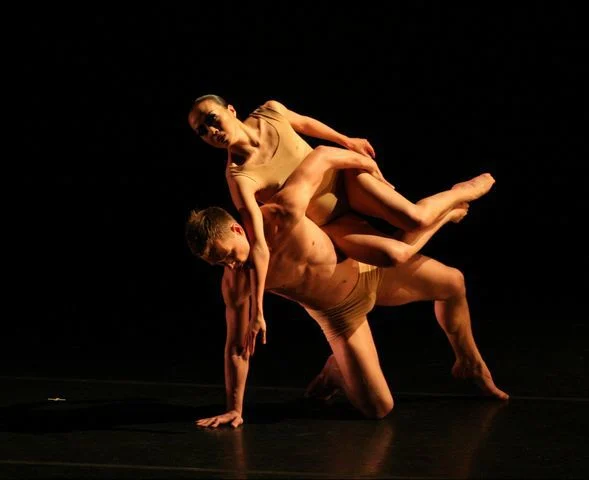I. Introduction
A. Martha Graham: A Pioneer in Dance
B. Significance of Martha Graham’s Legacy
C. Purpose of the Exploration
II. Martha Graham: A Pioneer in Dance
A. Biography and Background 1. Early Life and Influences 2. Dance Training and Influential Figures
B. Development of Graham Technique 1. Principles and Concepts 2. Innovations in Movement and Expression
C. Impact on Modern Dance 1. Revolutionizing Dance Form 2. Influence on Choreographic Approaches
III. Unraveling Martha Graham’s Choreographic Legacy
A. Exploring Major Works 1. “Lamentation” (1930) 2. “Appalachian Spring” (1944)
B. Themes and Motifs 1. Mythology and Archetypes 2. Human Emotions and Struggles
C. Symbolism and Expression 1. Use of Props and Set Design 2. Expressive Movement Vocabulary
IV. Analyzing Martha Graham’s Impact
A. Evolution of Dance Technique 1. Influence on Contemporary Dance Forms 2. Adaptation and Integration in Dance Education
B. Contributions to Gender and Identity 1. Empowerment of Female Dancers 2. Exploration of Feminine Archetypes
C. Social and Political Commentary 1. Addressing Social Issues through Dance 2. Advocacy for Artistic Freedom and Expression
V. Martha Graham’s Continuing Influence
A. Legacy in Dance Education 1. Graham-Based Training Programs 2. Preservation and Dissemination of Technique
B. Impact on Choreographers and Artists 1. Inspiration for New Generations 2. Incorporation of Graham’s Principles in Contemporary Works
C. Future Prospects and Challenges 1. Maintaining Relevance in Changing Times 2. Preserving Authenticity Amidst Innovation
VI. Conclusion
A. Recap of Martha Graham’s Revolutionary Contributions
B. Reflection on Unraveling Graham’s Legacy
C. Call to Action: Embracing and Expanding Graham’s Vision
I. Introduction
A. Martha Graham: A Pioneer in Dance
- Martha Graham is widely recognized as one of the most influential figures in modern dance history.
- Born in 1894, Graham revolutionized the art form with her innovative choreography and groundbreaking techniques.
B. Significance of Martha Graham’s Legacy
- Graham’s contributions to dance extend beyond her own choreographic works; her teachings and philosophies have left an indelible mark on the field.
- Her legacy continues to inspire generations of dancers, choreographers, and artists worldwide.
C. Purpose of the Exploration
- The purpose of this exploration is to delve into Martha Graham’s life, work, and enduring impact on the world of dance.
- By unraveling her legacy, we aim to gain a deeper understanding of her revolutionary rhythms and lasting influence.
II. Martha Graham: A Pioneer in Dance
A. Biography and Background
- Martha Graham’s early life, including her upbringing and early influences, shaped her artistic sensibilities.
- Her dance training under influential figures such as Ruth St. Denis and Ted Shawn laid the foundation for her future innovations.
B. Development of Graham Technique
- Graham developed her own unique movement technique, characterized by contraction and release, spirals, and emotional expression.
- Her approach to dance emphasized the connection between movement and inner emotion, revolutionizing the way dancers conveyed meaning on stage.
C. Impact on Modern Dance
- Graham’s contributions to modern dance are profound, as she challenged traditional notions of movement and form.
- Her choreographic innovations paved the way for a new era of experimentation and artistic exploration in dance.
III. Unraveling Martha Graham’s Choreographic Legacy
A. Exploring Major Works
- “Lamentation” (1930): This seminal work, performed entirely within a stretch of fabric, exemplifies Graham’s ability to evoke deep emotion through movement.
- “Appalachian Spring” (1944): A collaboration with composer Aaron Copland, this ballet captures the essence of American pioneer spirit and explores themes of love, hope, and renewal.
B. Themes and Motifs
- Graham’s choreography often delved into universal themes such as mythology, archetypes, and human emotions.
- Her works frequently explored themes of struggle, redemption, and the human condition, resonating with audiences on a profound level.
C. Symbolism and Expression
- Graham employed symbolism and expressive movement vocabulary to convey complex ideas and emotions.
- Through her use of props, set design, and intricate choreography, she created immersive dance experiences that transcended traditional narrative forms.
IV. Analyzing Martha Graham’s Impact
A. Evolution of Dance Technique
- Graham’s technique revolutionized the way dancers approached movement, emphasizing organic, dynamic, and emotionally resonant gestures.
- Her influence can be seen in contemporary dance forms, where her principles continue to inform choreographic approaches and training methodologies.
B. Contributions to Gender and Identity
- Graham’s work empowered female dancers by providing them with roles that were both physically and emotionally demanding.
- Her exploration of feminine archetypes challenged traditional gender roles and opened up new possibilities for expression in dance.
C. Social and Political Commentary
- Graham’s choreography often served as a platform for social and political commentary, addressing issues such as war, oppression, and human rights.
- Through her artistry, she advocated for artistic freedom and expression, using dance as a means of social change and transformation.
V. Martha Graham’s Continuing Influence
A. Legacy in Dance Education
- Graham’s technique continues to be taught and practiced in dance schools and training programs around the world.
- Dedicated institutions, such as the Martha Graham Dance Company and the Martha Graham School of Contemporary Dance, preserve and disseminate her technique to future generations.
B. Impact on Choreographers and Artists
- Graham’s legacy lives on in the work of contemporary choreographers and artists who draw inspiration from her innovative approach to dance.
- Her principles and philosophies continue to inform and influence the creative process of artists across diverse disciplines.
C. Future Prospects and Challenges
- As dance evolves in the 21st century, the challenge lies in maintaining the relevance and authenticity of Graham’s vision while embracing innovation and experimentation.
- Preserving Graham’s legacy requires a commitment to honoring her artistic integrity and pioneering spirit, while also adapting to the changing landscape of dance.
VI. Conclusion
A. Recap of Martha Graham’s Revolutionary Contributions
- Martha Graham’s contributions to the world of dance are nothing short of revolutionary, shaping the course of modern dance history and inspiring countless artists.
- Her legacy as a pioneer in choreography and dance technique continues to reverberate throughout the dance world and beyond.
B. Reflection on Unraveling Graham’s Legacy
- Through our exploration of Martha Graham’s life and work, we have gained a deeper appreciation for her artistic vision, creative genius, and enduring impact.
- Her legacy serves as a testament to the transformative power of dance and the enduring legacy of artistic innovation.
C. Call to Action: Embracing and Expanding Graham’s Vision
- As we move forward, let us continue to honor Martha Graham’s legacy by embracing her vision of dance as a powerful form of expression, exploration, and transformation.
- By expanding upon her principles and pushing the boundaries of artistic possibility, we can ensure that her revolutionary rhythms continue to resonate with audiences for generations to come.

